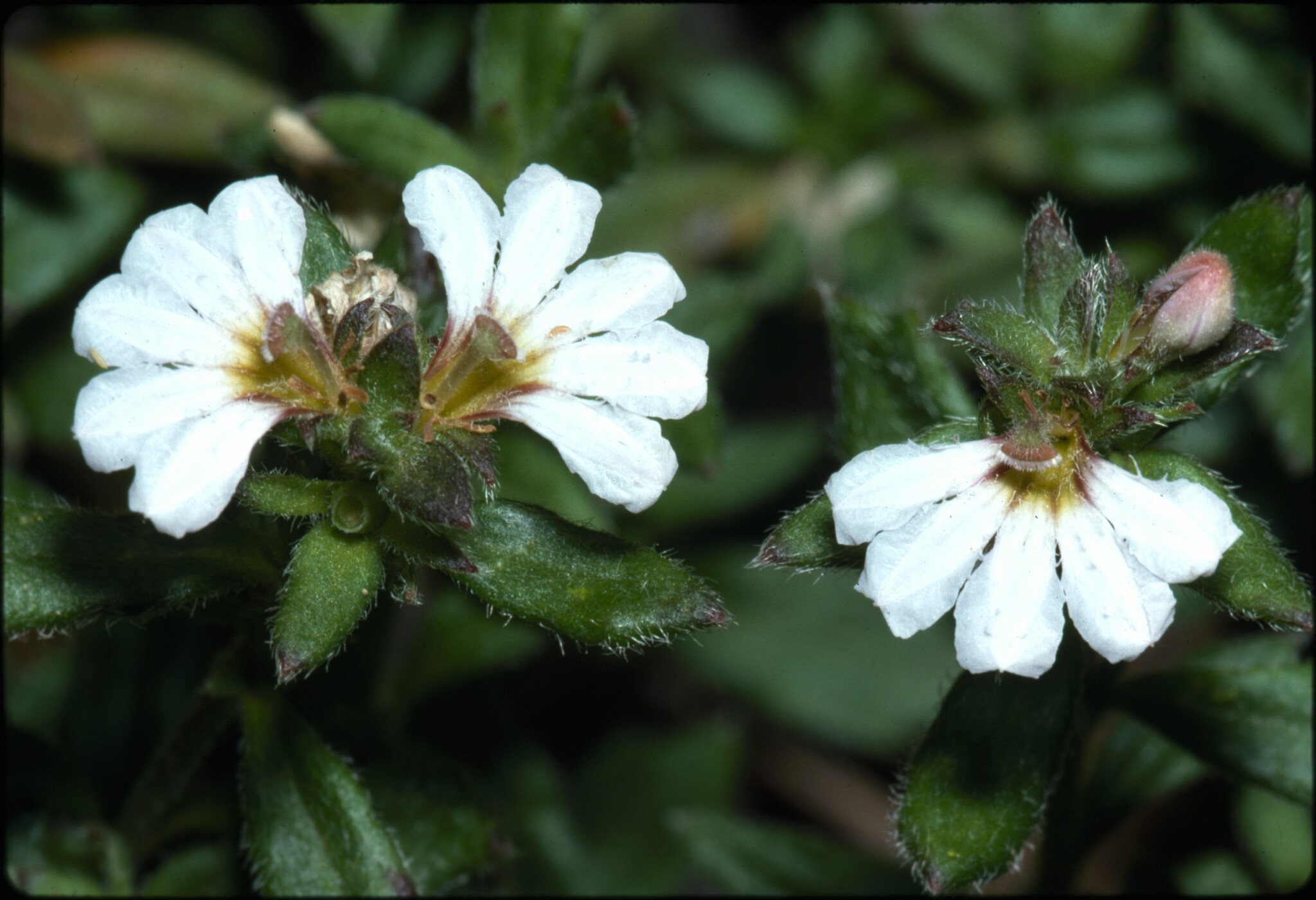
Latin scaevola— left-handed, from scaevus — left, referring to the 5 corolla lobes all on one side of the axis.
Hairy herbs or shrubs. Leaves mostly alternate and with a tuft of hairs in the axil; stalked or not. Flowers in clusters. Sepals 5, shortly united at the base. Petals tubular, opening out like a fan, generally hairy in the throat, the lobes winged and without either ears or anterior pouch. Stamens free. Ovary inferior, 2-chambered (except s. albida which appears 1-chambered). Fruit fleshy to almost dry.
Grown for the prolific, colourful fan-like flowers. Less frequently cultivated species include: S. calendulacea (Kenn.) Druce,Dune Fan-flower, from SA,Qld, NSW and Vic which has bright blue flowers for most of the year; S. humilis R. Br. from the NT, SA, Qld and NSW with blue or white flowers; and S. striata R. Br. from WA which has blue flowers to 3 cm long. [S. stricta Roem. & Schultes]
Cuttings, rarely from seed.
The fruits of S. spinescens were eaten by the Aborigines of the Flinders Ranges.
Corolla lobes without ears or anterior spur (pouch).
About 96 species from the subtropical southern hemisphere to the Caribbean. Australia has 70 endemic species.
Carolin (1992).
Source: (2002). Goodeniaceae. In: . Horticultural Flora of South-eastern Australia. Volume 4. Flowering plants. Dicotyledons. Part 3. The identification of garden and cultivated plants. University of New South Wales Press.
